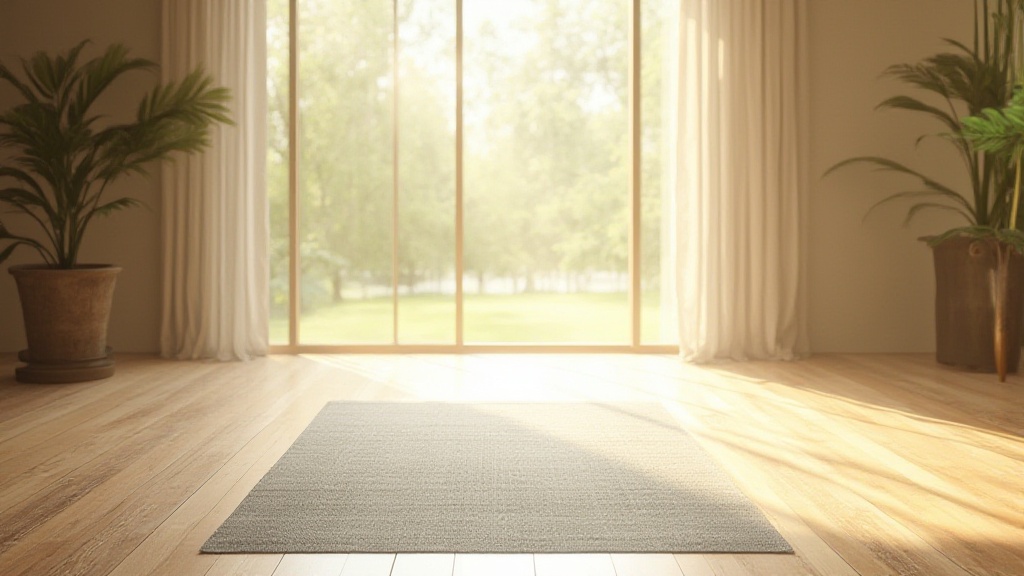
Flexibility routines significantly improve your overall range of motion, which directly impacts daily activities and athletic performance. Incorporating regular stretching exercises into your routine not only aids in muscle relaxation but also enhances mobility, allowing for smoother movements.
These routines play a key role in injury prevention, promoting joint health and flexibility training.
By dedicating time to dynamic stretching and static stretching, individuals can experience lasting benefits, such as improved posture alignment and increased elasticity in muscles.
Prioritize flexibility stretching routines to ensure sustained physical health and enhanced mobility.
Benefits Of Stretching Exercises For Flexibility
Implementing stretching exercises contributes to a balanced and strong body. Regular flexibility routines not only enhance athletic performance but also complement strength training, leading to improved overall fitness.
Specifically, muscle groups like hamstrings, quadriceps, and hip flexors benefit greatly from targeted stretches, which can enhance their range of motion and reduce muscle tension. Incorporate both dynamic and static stretching into your daily routine to maximize the benefits.
Consistent practice promotes muscle maintenance and injury prevention, ensuring a robust foundation for your physical activities.
Enhanced Performance Through Stretching
Regularly practicing stretching exercises increases muscular endurance and facilitates better movement techniques.
In turn, this contributes to improved body performance, especially during physical activities.
Ensuring proper stretching frequency can lead to enhanced mobility and overall wellness.
Targeted Stretching Approaches
Utilizing specific targeted stretches can significantly improve flexibility in certain areas. For instance, yoga for flexibility provides various poses aimed at increasing joint health and proprioception.
These stretching methods also play a role in stress relief and breathing techniques, promoting both physical and mental wellbeing.
Integrating Stretching Into Daily Routines
Incorporating stretching into warmup routines or cooldown stretches enhances recovery and prepares the body for exercise. Effective mobility drills can be performed before workouts to improve performance.
Similarly, implementing postexercise recovery routines using techniques like foam rolling can greatly benefit overall muscle health and flexibility.

How Does Dynamic Stretching Improve Performance
Dynamic stretching significantly enhances athletic performance across various sports by incorporating warmup routines that activate essential muscle groups. These routines also increase heart rate, effectively preparing the body for intense activity.
In sports such as soccer, basketball, and track and field, athletes particularly benefit from dynamic stretching, as they experience improvements in agility, speed, and coordination.
Effective Dynamic Stretches
For optimal warm-ups, consider incorporating the following dynamic stretches:.
- Leg swings: This exercise engages hip flexors and enhances mobility.
- Walking lunges: This movement stimulates the quadriceps and glutes.
Ultimately, integrating dynamic stretching into your warmup routines can improve flexibility and reduce the risk of injury. This results in optimal body performance during athletic activities.
Static Stretching Techniques For Muscle Relaxation
Muscle relaxation and post-exercise recovery are greatly benefited by specific static stretching techniques. These techniques effectively address muscle tension, promoting relaxation and alleviating soreness after intense workouts.
Common Static Stretching Techniques
Consider implementing the following targeted stretches to enhance joint health and flexibility:.
- Hamstring stretch: This stretch focuses on the back of the thigh, helping alleviate tightness.
- Shoulder stretch: This technique targets the shoulder muscles, promoting greater flexibility.
Each static stretch should be held for 15-30 seconds and repeated 2-3 times per session to maximize effectiveness. This routine not only aids in postexercise recovery but also ensures that muscle maintenance is adequately addressed. As a result, this contributes to improved athletic performance and overall wellness in daily life.
Stretching Techniques
- Dynamic stretching can improve athletic performance by increasing blood flow to muscles, enhancing power output.
- Studies show that athletes who perform dynamic stretches before competition demonstrate better speed and agility.
- Static stretching post-exercise can decrease muscle soreness and improve recovery time, allowing for quicker return to training.
- Regular implementation of stretching routines can lead to long-term benefits in flexibility and joint health, reducing the risk of injuries.
Warmup Routines To Enhance Mobility
Effective warmup routines play a significant role in preparing the body for physical activity. These routines significantly aid in injury prevention by enhancing mobility and increasing blood flow.
Dynamic stretching exercises, such as leg swings and arm circles, specifically improve joint range of motion and flexibility.
Lunges with a twist can effectively engage multiple muscle groups, further enhancing overall mobility.
For optimal results, a warmup should last between 10 to 15 minutes, beginning with light cardiovascular activities like jogging. This structure helps ensure that the body is adequately prepared, thereby reducing the risk of strains and sprains during workouts.
Specific Movements for Enhanced Mobility
Incorporating targeted stretches into warmup routines can maximize benefits.
Movements such as high knees and butt kicks activate large muscle groups while promoting mobility.
Research indicates that dynamic stretching significantly enhances performance and decreases injury risk.
A systematic approach, including mobility drills and active stretching, significantly prepares joints for the demands of physical activity.
Cooldown Stretches For Recovery Routines
Integrating cooldown stretches is essential for an effective recovery strategy after workouts.
These stretches significantly contribute to muscle relaxation, reducing muscle soreness and stiffness.
Implementing essential static stretching exercises, such as hamstring and quadriceps stretches, can effectively alleviate post-exercise muscle tension.
Cooldown routines that include targeted stretches promote better recovery and overall wellness.
Incorporating a flexibility routine into your cooldown can enhance blood circulation and facilitate recovery. Aim to hold each stretch for 15-30 seconds, allowing muscles to return to their resting length.
Taking 5-10 minutes for these stretches post-workout will support muscle maintenance and contribute to overall wellness, making recovery more efficient.
Easy Cooldown Stretches to Implement
Including effective cooldown stretches into your routine can greatly enhance recovery. Simple stretches, such as the child’s pose and seated forward fold, assist in releasing tension and improving posture alignment.
These stretches not only promote stress relief but also aid in overall wellness by enhancing flexibility after intense workouts.
Warmup and Cooldown Routines
- Dynamic stretching can improve joint range of motion by up to 20%.
- Engaging in a proper warmup can reduce the risk of injuries by 50%.
- Cooldown stretches can decrease muscle soreness by promoting better blood circulation.
- Holding stretches for 15-30 seconds can significantly enhance muscle flexibility.
Injury Prevention Through Proper Stretching
Incorporating stretching exercises into your daily routine significantly aids injury prevention. Regularly practicing these movements helps to increase range of motion and facilitates muscle relaxation, both of which are crucial for maintaining physical health.
Common injuries, such as muscle strains in the hamstrings and quadriceps or tendonitis in the shoulders and knees, can often be mitigated through effective stretching.
To seamlessly integrate stretching into your daily activities, consider the following:.
- Dynamic stretching during warmup routines prepares the body for physical exertion.
- Static stretching as part of cooldown stretches after workouts promotes recovery.
By prioritizing stretching frequency and incorporating these techniques, you contribute to long-term injury prevention and overall wellness.
Can Yoga For Flexibility Help Posture Alignment
Engaging in yoga offers exceptional benefits for flexibility, which profoundly impacts body alignment and health. The enhanced mobility gained from practicing yoga not only improves posture alignment but also promotes overall health. Specific yoga poses that support better posture include:
Mountain Pose (Tadasana): This foundational pose establishes proper alignment and balance.
Cobra Pose (Bhujangasana): This pose strengthens the spine while opening the chest, promoting better posture.
Encouraging a consistent yoga practice is essential for sustained improvements in alignment, as it effectively integrates flexibility training with mindfulness. By regularly practicing yoga, you strengthen core stability and enhance balance, ensuring your body maintains proper alignment while reducing the risk of discomfort over time.
Injury Prevention and Yoga
- Studies show that regular stretching can reduce the risk of injuries by up to 50%.
- Yoga practice can increase flexibility by 35% over a period of 8 weeks.
- Proper posture can decrease back pain and improve overall physical performance.
- Dynamic stretching has been shown to enhance athletic performance and reduce muscle soreness post-exercise.
Exploring Breathing Techniques For Stress Relief
Effective breathing techniques contribute significantly to both mental clarity and stress alleviation. Integrating these methods into previously established relaxation strategies fosters a deeper sense of calm and stability.
By mastering breath control, individuals not only enhance focus but also mitigate anxiety levels.
Practical application of exercises such as deep breathing can be easily woven into daily life, making them accessible for stress management.
Key Breathing Techniques
- Diaphragmatic breathing: This technique involves engaging the diaphragm, which allows for deeper breaths, consequently promoting muscle relaxation and reducing tension.
- Box breathing: Cultivating a rhythm through inhalation and exhalation, this method fosters an enhanced sense of calm and concentration.
Incorporating Breathing into Daily Life
Adding these breathing techniques to daily routines not only enhances mobility but also supports injury prevention by effectively reducing overall muscle tension. Prioritizing breath control improves overall wellness, thereby enriching both mental and physical health.
Breathing Techniques
- Research shows that diaphragmatic breathing can lower stress hormones and improve emotional regulation.
- Studies indicate that box breathing may enhance cognitive performance and mental clarity.
- Regular practice of breathing techniques has been linked to lower blood pressure and improved cardiovascular health.
- Incorporating breath control into daily routines can lead to increased resilience against stress and anxiety.
